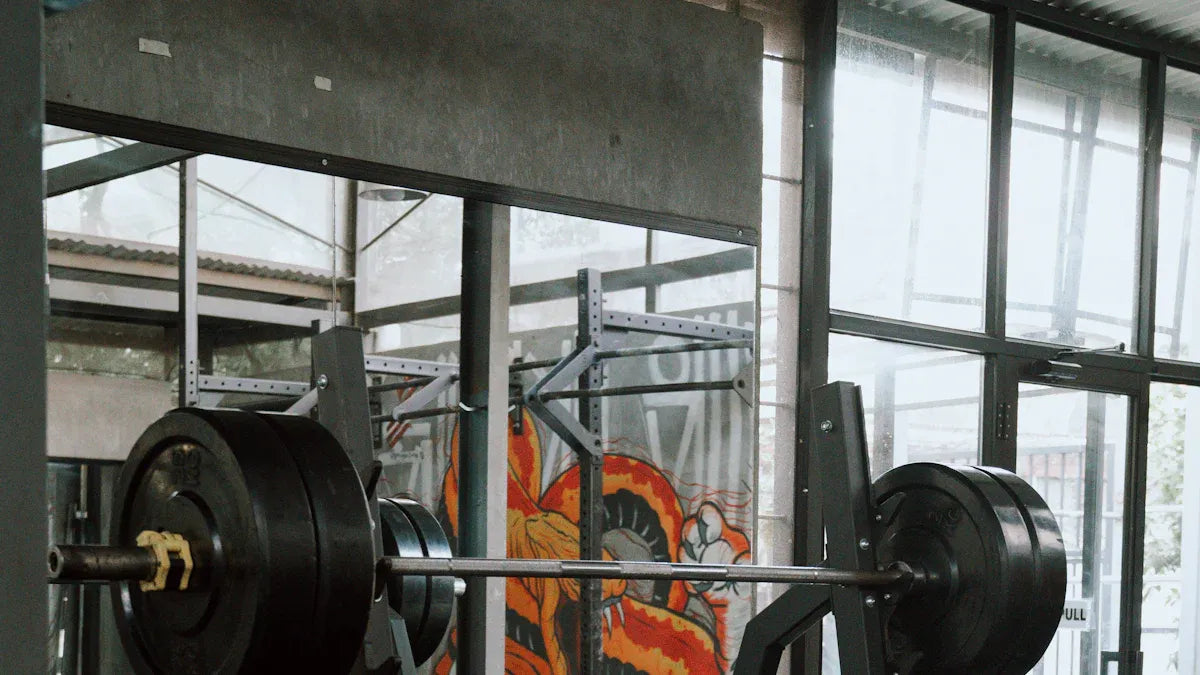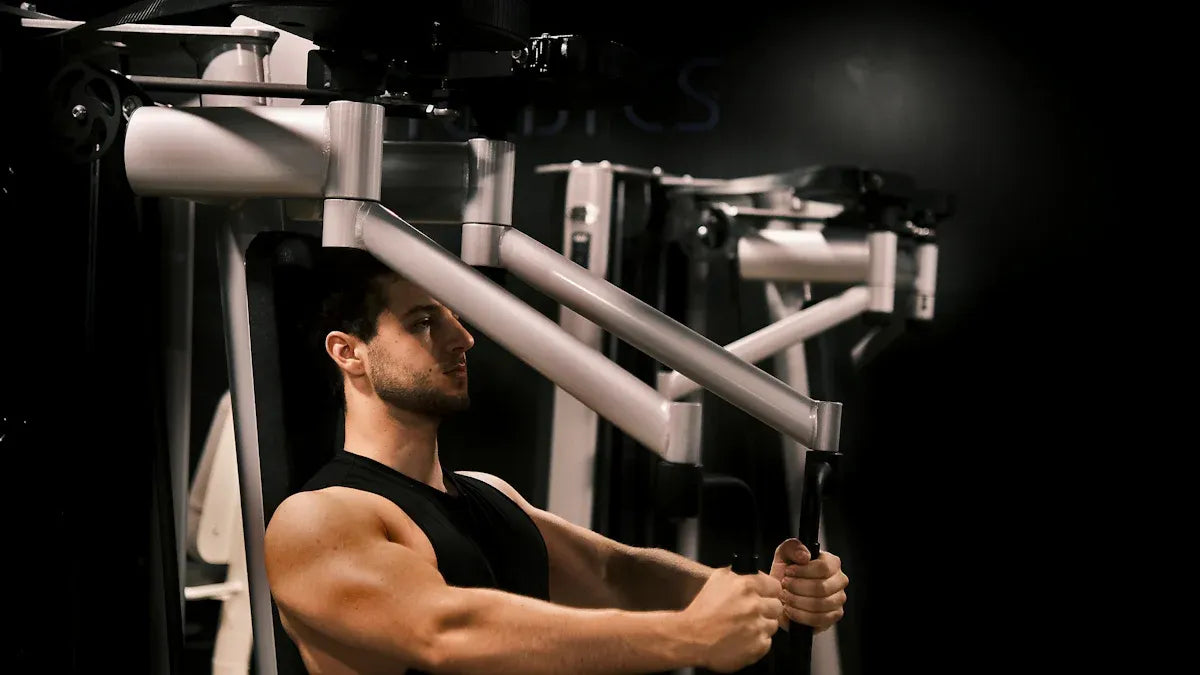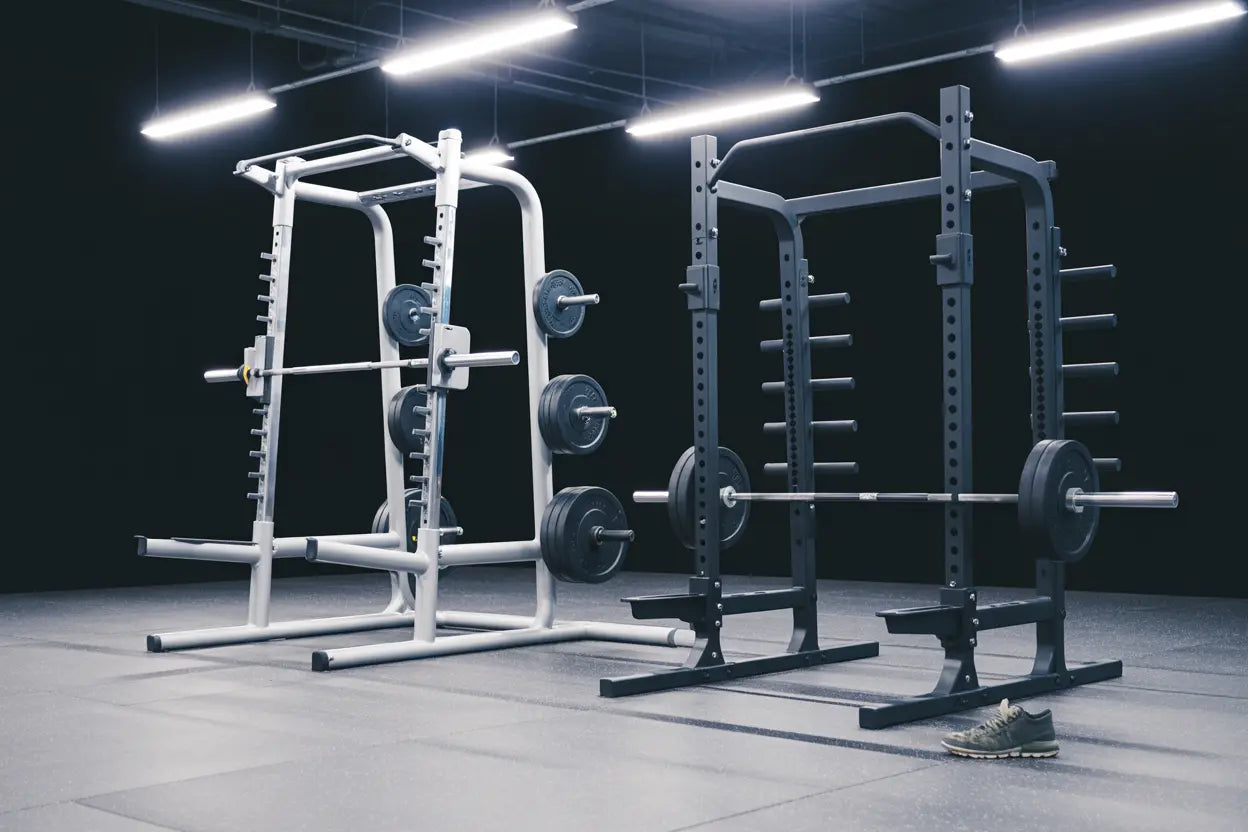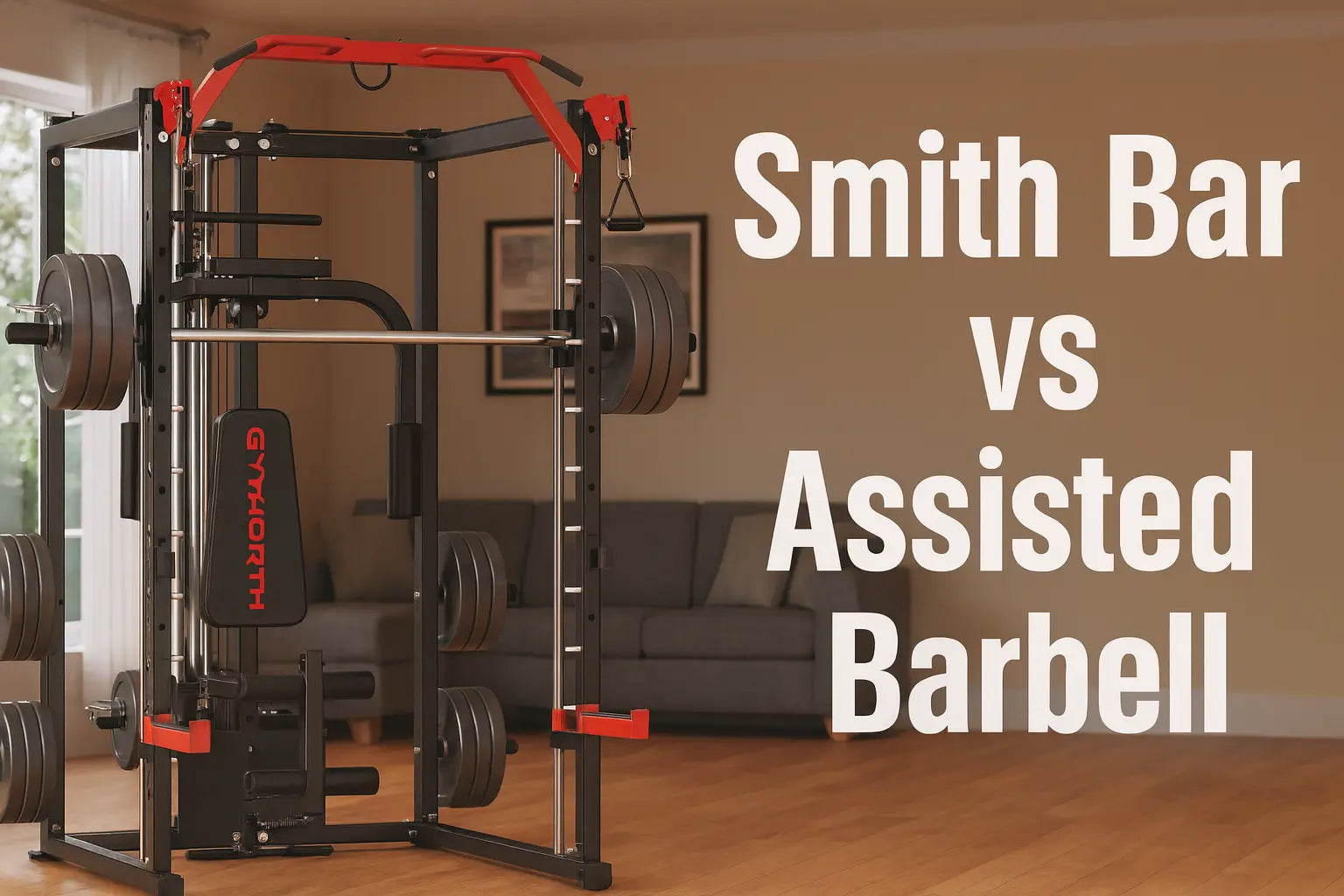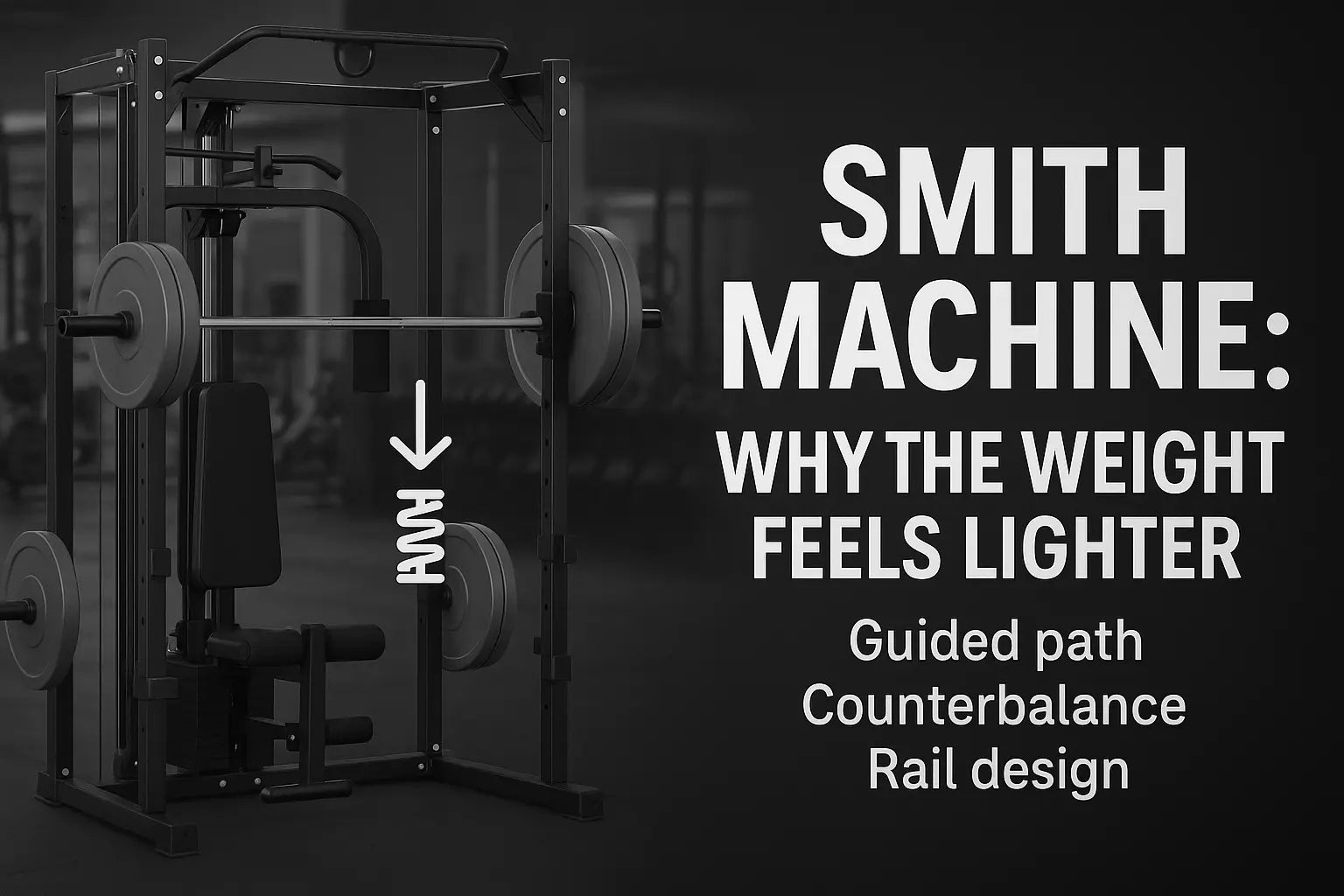The smith machine has become one of the most popular pieces of gym equipment for good reason. Whether you’re a beginner looking to build confidence with resistance training or an experienced lifter seeking to isolate specific muscle groups, learning how to use a smith machine safely and effectively can transform your workout routine.
This comprehensive guide will walk you through everything you need to know about using the smith machine, from understanding its basic components to mastering advanced exercises. You’ll discover proper setup techniques, essential safety protocols, and proven strategies for maximizing your training results while minimizing injury risk.

Getting Started with the Smith Machine
The smith machine is a specialized piece of gym equipment that features a barbell fixed to steel rails, allowing movement only along a vertical or slightly angled path. This fixed bar path provides enhanced safety and control compared to free weights, making it an excellent choice for both beginners learning proper form and experienced lifters targeting specific muscle groups.
The primary benefits of smith machine training include built-in safety mechanisms, reduced need for spotters, and the ability to perform heavy lifting with greater confidence. The controlled movement pattern helps beginners develop correct lifting techniques while allowing advanced users to push their limits safely.
When deciding between smith machines and free weights, consider your training goals and experience level. The smith machine excels for muscle isolation, rehabilitation work, and situations where training alone is necessary. However, free weight exercises provide superior stabilizer muscle activation and functional movement patterns that translate better to real-world activities.
Setting realistic expectations for your first smith machine workout is crucial. Start with lighter weights than you might use with free weights, focus on learning proper body positioning, and prioritize form over load. The unique characteristics of the smith machine require an adjustment period, even for experienced lifters.
The Smith Machine Components
The heart of any smith machine lies in its barbell rail system. This sophisticated mechanism guides the barbell along a predetermined path, typically either perfectly vertical or angled at 7-12 degrees. The rails ensure consistent movement patterns and prevent the bar from deviating from its intended trajectory, providing the controlled environment that makes smith machines so valuable for safety and muscle isolation.
The safety catch system represents one of the most important safety features. These adjustable hooks or stops can be positioned at various heights along the rails, creating a mechanical barrier that prevents the bar from dropping below a predetermined point. This self-spotting capability allows you to train to failure safely, particularly crucial during exercises like smith machine squats or bench presses.
Understanding counterbalance systems is essential for accurate weight calculation. Most smith machines incorporate counterweights that reduce the effective weight of the empty bar, typically making it feel like 15-25 pounds rather than the standard 45-pound Olympic barbell. This system helps with smooth operation but requires adjustment in your weight calculations and progression planning.
Different smith machine types offer varying advantages. Vertical machines provide the most stable platform for certain exercises, while angled machines (typically 7-12 degrees) better accommodate natural human biomechanics during movements like squats. Understanding your gym’s specific machine type helps optimize your exercise selection and body positioning.
Smith Machine Bar Weight and Loading
Determining the actual weight of your gym’s smith machine bar requires testing or checkout this smith machine bar wegiht page. Unlike standard barbells with consistent 45-pound weights, smith machine bars vary significantly due to counterbalance systems. Some machines display the effective bar weight, while others require calculation based on the counterbalance ratio.
Proper weight plate loading follows standard safety protocols but with additional considerations. Always load plates evenly on both sides, secure them with collars or clips, and verify that the total load doesn’t exceed the machine’s capacity. The smooth operation of smith machines can make heavier weights feel deceptively manageable, making gradual progression especially important.
The counterbalance effect influences how weights feel during different portions of exercises. This assisted movement can allow you to handle more weight than with free weights, but it also reduces the stabilization challenge that contributes to functional strength development.
Starting weight recommendations vary by exercise and experience level. Beginners should start with just the bar for most exercises, while experienced lifters might begin with 10-20% less weight than their typical free weight loads. This conservative approach allows proper technique development and adaptation to the machine’s unique characteristics. If you're beginner you can use this calculator to convert your free weight to smith machine weight.
Pre-Workout Setup and Safety Preparation
Inspecting the smith machine by NSCA's safety checklist before use should become an automatic routine. Check that the rails are clean and free of debris, verify that the bar moves smoothly along its entire range of motion, and ensure all safety catches lock securely at various positions. Look for any signs of wear, damage, or malfunction that could compromise safety during your workout.
Adjusting bar height correctly sets the foundation for safe and effective training. For smith machine squats, position the bar at approximately chest height, allowing you to unrack comfortably without excessive reaching or crouching. Bench press setups require the bar at shoulder height when lying on the bench, enabling natural pressing mechanics without awkward positioning.
Setting safety catch positions demands careful consideration of your exercise range of motion and experience level. Position catches slightly below your lowest controllable position for each exercise, providing protection against complete failure while not interfering with full range of motion. Conservative positioning is always preferable, especially when training alone or attempting new exercises.
A proper warm-up routine specific to smith machine training should include dynamic movements that prepare your body for the constrained movement patterns. Focus on mobility work for the joints involved in your planned exercises, and perform several light sets with just the bar to acclimate to the machine’s feel and rhythm.

How to Use a Smith Machine
The twist mechanism for unlocking and locking the bar requires precise technique for safety and efficiency. To unlock, lift the bar slightly to relieve pressure on the catches, then rotate your wrists to turn the bar until the hooks clear the catches. The direction typically involves a quarter-turn, but this varies between machines. Practice this motion with an empty bar until it becomes second nature.
Proper hand positioning and grip width depend on the specific exercise being performed. For smith machine squats, use a grip width similar to back squats, positioning hands evenly and maintaining firm contact throughout the movement. Bench press grips should align with your natural pressing pattern, typically slightly wider than shoulder width for most individuals.
Understanding the fixed bar path is crucial for optimizing your body positioning and exercise effectiveness. Unlike free weights that allow three-dimensional movement, the smith machine constrains the bar to a single plane. This requires adjusting your stance, body angle, and movement pattern to work harmoniously with the predetermined path rather than fighting against it.
Emergency procedures for safely racking the bar during failed reps involve staying calm and using the safety systems properly. If you cannot complete a rep, lower the weight to the safety catches, then twist the bar to lock it in place. Never attempt to fight through a failed rep or force the bar beyond your capability, as this defeats the safety purpose of the machine.
Proper Body Positioning
Foot placement strategies vary significantly between exercises and represent one of the most critical aspects of effective smith machine use. For squats, position your feet slightly forward of where they would be with free weight squats, typically 6-12 inches ahead of the bar. This accounts for the vertical bar path and maintains proper knee tracking throughout the movement.
Maintaining proper posture and spinal alignment becomes easier with the smith machine’s guided path but still requires conscious attention. Keep your core engaged, shoulders back, and maintain neutral spine positioning throughout each exercise. The machine’s stability can lead to complacency, making deliberate postural awareness essential for injury prevention and exercise effectiveness.
Facing the machine correctly varies by exercise and personal preference, though most movements work best facing away from the machine. This orientation typically provides better bar path alignment and more natural movement mechanics. However, some exercises like reverse lunges or certain pressing variations may benefit from facing toward the machine.
Adjusting stance width and foot angle should accommodate both the exercise requirements and your individual biomechanics. Wider stances work well for smith machine squats targeting glutes and inner thighs, while narrower positions emphasize quadriceps development. Experiment with different positions to find what feels most natural and effective for your body type.
Smith Machine Exercises and Techniques
Essential Smith Machine Movements
Squats
Smith machine squats form the foundation of most training programs using this equipment. Begin by positioning the bar on your upper back similar to a traditional back squat, ensuring even bar placement across your trapezius muscles. Set your feet slightly forward of the bar and shoulder width apart, maintaining slight external rotation of the feet.
The descent should be controlled and deliberate, sitting back into the movement while keeping your chest up and core engaged. The smith machine’s guided path allows you to lean slightly forward during the descent, which can feel unnatural initially but becomes comfortable with practice. Descend until your thighs reach parallel or slightly below, depending on your mobility and comfort level.
Bench Press
Smith machine bench press requires careful setup to maximize safety and effectiveness. Position yourself on the bench with your eyes directly under the bar when it’s racked. Your feet should be flat on the floor or on the bench, depending on your preference and bench height. Grip the bar with hands positioned slightly wider than shoulder width.
The pressing motion should follow a straight vertical path, which differs from the slight arc of a traditional barbell bench press. This vertical path may feel awkward initially but provides excellent chest muscle isolation. Lower the bar to your chest with control, pause briefly, then press upward explosively while maintaining tight core engagement throughout the movement.
Row
Smith machine rows offer an excellent pulling exercise option using the same equipment. Set the bar at approximately waist height and position yourself at an angle underneath it. Grip the bar with hands slightly wider than shoulder width and maintain a straight body line from head to heels.
The rowing motion involves pulling your chest toward the bar while squeezing your shoulder blades together. This exercise effectively targets the upper back and rear deltoids while providing the stability benefits of the smith machine. Focus on initiating the movement with your back muscles rather than your arms for maximum effectiveness.
Shoulder Presses
Smith machine shoulder presses provide excellent overhead pressing development with enhanced safety. Set the bar at approximately shoulder height and position yourself with feet shoulder width apart. Grip the bar with hands positioned just outside shoulder width, ensuring even placement.
Press the bar straight up following the machine’s guided path while maintaining core stability and neutral spine alignment. The vertical path ensures consistent shoulder joint mechanics and reduces the risk of compensation patterns that can occur with free weight pressing. Lower the bar to approximately chin level before pressing back to the starting position.
Advanced Smith Machine Movements
Split Squats and Lunges
Split squats and lunges benefit tremendously from the smith machine’s stability and safety features. Position yourself with one foot forward and one foot back, placing the bar on your upper back similar to squats. The rear foot can be elevated on a bench for Bulgarian split squats, creating an excellent single-leg training stimulus.
The descent involves lowering your body by bending both knees, keeping most of your weight on your front leg. The smith machine’s guided path helps maintain balance while allowing you to focus entirely on the working leg. This unilateral training approach helps address strength imbalances and improves functional movement patterns.
Hip Thrusts
Hip thrusts using the smith machine provide exceptional glute development opportunities. Position yourself with your upper back against a bench and the bar positioned across your hips. Set the bar height so you can comfortably position yourself underneath it when seated on the ground.
The movement involves driving your hips upward while squeezing your glutes, creating a straight line from your knees to your shoulders at the top position. The smith machine’s guided path ensures consistent hip mechanics and allows you to focus on maximizing glute activation without worrying about bar path deviation.
Calf Raise
Calf raises on the smith machine offer superior range of motion and loading options compared to most dedicated calf machines. Position the bar on your upper back and stand on a raised platform or block, allowing your heels to drop below the level of your toes at the bottom position.
Rise up onto your toes as high as possible, squeezing your calf muscles at the top of the movement. The smith machine’s stability allows you to use heavier weights and focus purely on calf muscle activation without balance concerns. Lower slowly to maximize the eccentric muscle-building stimulus.
Inverted Row
Inverted rows transform the smith machine into an excellent bodyweight pulling station. Set the bar at approximately chest height and position yourself underneath it with your body straight. Grip the bar with hands slightly wider than shoulder width and hang with arms extended.
Pull your chest toward the bar by retracting your shoulder blades and bending your elbows. This exercise provides an excellent complement to pushing movements and can be easily adjusted for difficulty by changing body angle or bar height.

Common Mistakes and How to Avoid Them
Foot Position
Foot positioning errors represent the most frequent mistakes when learning how to use a smith machine. Many beginners position their feet directly under the bar as they would with free weight squats, leading to poor knee tracking and increased injury risk. The correct approach involves placing feet slightly forward to accommodate the vertical bar path.
Neglecting Core Engagement
Relying too heavily on the machine’s stability while neglecting core engagement undermines the training benefits and can lead to weakness in stabilizer muscles. Even though the smith machine provides external stability, you should still maintain active core engagement and proper posture throughout each exercise. Think of the machine as providing backup stability rather than primary support.
Incorrect Bar Height
Using incorrect bar height settings creates unnecessary difficulty and potential safety hazards. Setting the bar too high forces you to reach excessively during unracking, while setting it too low requires excessive crouching or creates awkward starting positions. Take time to adjust the bar height properly for each exercise rather than working around poor positioning.
Set Safety Catches Incorrectly
Failing to set safety catches at appropriate heights represents a serious safety oversight that negates one of the smith machine’s primary benefits. Always set catches slightly below your lowest controllable position for each exercise, and test them with light weight before beginning your working sets. Remember that safety catches are backup protection, not primary stopping points.
Not Every Exercise Belongs on a Smith Machine
Attempting exercises that are better suited for free weights limits your training effectiveness and may increase injury risk. Deadlifts, for example, work poorly on smith machines due to the constrained bar path that doesn’t accommodate natural deadlift mechanics. Similarly, exercises requiring natural bar path variations, such as overhead pressing with shoulder mobility limitations, may cause problems on fixed-path machines.
Safety Guidelines and Best Practices
Always using safety catches represents the fundamental rule of smith machine training, but understanding their limitations is equally important. Safety catches provide excellent protection against catastrophic failure, but they won’t prevent all injuries, particularly those caused by poor form or excessive weight selection. Treat them as backup protection while maintaining focus on proper technique and conservative progression.
Proper breathing techniques during smith machine exercises follow the same principles as free weight training but with some modifications due to the controlled environment. Inhale during the lowering phase of exercises, hold your breath during the most challenging portion of the lift, and exhale during the lifting phase. The stability of the smith machine allows for more consistent breathing patterns compared to free weights.
Recognizing when to stop a set and how to safely rack the bar requires developing good body awareness and respecting your limits. End sets when your form begins to deteriorate or when you feel uncertain about completing another rep safely. Use the twist mechanism to lock the bar immediately when ending a set, rather than attempting partial reps or fighting through poor form.
Gym etiquette considerations include cleaning equipment after use, allowing others to work in between sets, and not monopolizing the machine during busy periods. smith machines are popular pieces of equipment, so being considerate of other gym members helps maintain a positive training environment for everyone.
Exercises to Avoid on the Smith Machine
Deadlifts present significant problems on smith machines due to the fixed vertical bar path that doesn’t accommodate the natural forward lean required for proper deadlift mechanics. This constraint can place excessive stress on the lower back and prevent the natural hip hinge movement that makes deadlifts effective and safe. Free weight deadlifts or trap bar variations provide superior biomechanics and training benefits.
Overhead movements requiring natural bar path for shoulder health, such as military presses with shoulder mobility restrictions, may cause problems on smith machines. While many people can perform overhead pressing safely on smith machines, those with shoulder impingement or mobility limitations may find the fixed path exacerbates their issues. Free weight pressing allows natural compensation patterns that may be healthier for some individuals.
Exercises that benefit more from free weight stabilization include most functional movement patterns and sport-specific training exercises. Movements like Turkish get-ups, farmers walks, and rotational exercises lose their primary benefits when performed in a constrained environment. These exercises develop real-world strength and coordination that transfers better from free weight training.
Alternative equipment recommendations for avoided exercises include using squat racks for deadlifts, free weight barbells for overhead pressing with shoulder concerns, and dumbbells or kettlebells for functional movement patterns. The leg press machine provides an excellent alternative for quad-dominant squatting movements, while the hack squat machine offers similar benefits with potentially better biomechanics for some individuals.
Related Article: Smith Machine VS Squat Rack: Which is Best for You
Progression Strategies for Different Experience Levels
Beginner approaches should focus on building confidence and learning basic movement patterns before advancing to heavier weights or complex exercises. Start with bodyweight exercises and basic smith machine movements using just the bar weight. Master the fundamental movement patterns like squats, bench presses, and rows before adding significant external load.
The learning progression for beginners should emphasize frequency over intensity, performing smith machine exercises 2-3 times per week with moderate volumes and conservative weight increases. Focus on developing consistency in movement quality and building familiarity with the machine’s operation. Progression should be gradual, adding 5-10 pounds per week as form and confidence improve.
Intermediate strategies involve incorporating smith machine exercises as accessory work to complement free weight training. Use the smith machine for isolation exercises, high-repetition sets, and training to failure safely. This approach maximizes the benefits of both training modalities while addressing specific weaknesses or imbalances identified in your free weight movements.
Advanced applications include using smith machine exercises for specialized training techniques like drop sets, partial range of motion training, and muscle pre-exhaustion protocols. The enhanced safety and control allow experienced lifters to push their limits in ways that might be unsafe or impractical with free weights. These techniques should be used sparingly and with specific goals in mind.
Transitioning between smith machine and free weight training requires gradual adjustment periods and realistic expectations. When moving from smith machines to free weights, expect to use significantly less weight initially as your stabilizer muscles adapt to the increased demand. Conversely, transitioning from free weights to smith machines may allow for heavier loads but requires adjustment to the constrained movement patterns.

Maximizing Your Smith Machine Workouts
Programming smith machine exercises into your routine effectively requires understanding how they complement other training modalities. Use smith machine exercises for specific purposes such as muscle isolation, training to failure, or high-volume work, rather than as complete replacements for free weight training. A balanced approach typically involves 20-40% smith machine work within a broader training program.
Combining smith machine work with free weights creates the optimal training environment for most individuals. Start workouts with free weight compound movements to develop stabilizer strength and coordination, then transition to smith machine exercises for targeted muscle work and higher intensity training. This sequence maximizes the benefits of both training approaches.
Using the machine for rehabilitation and injury prevention represents one of its most valuable applications. The controlled environment allows for precise movement patterns and gradual loading progression that can be invaluable during injury recovery. Work with qualified professionals when using smith machines for rehabilitation purposes to ensure appropriate exercise selection and progression.
Tracking progress and adjusting weight and repetitions over time requires careful attention to both quantitative and qualitative measures. Record weights, repetitions, and sets, but also note subjective factors like movement quality, muscle fatigue patterns, and overall exercise comfort. The smith machine’s consistent environment makes it excellent for tracking precise progression over time.
Sample training splits incorporating smith machine exercises might include upper/lower body divisions, push/pull/legs arrangements, or body part specialization programs. The key is using smith machine exercises strategically rather than randomly, with specific purposes for each movement selection. Consider factors like training goals, experience level, and available time when designing your smith machine-inclusive programs.
Periodization strategies for smith machine training should align with your overall training goals and phases. During strength phases, use smith machines for accessory work and technique refinement. During hypertrophy phases, leverage the machine’s safety features for high-intensity muscle-building techniques. During deload periods, smith machines provide excellent options for maintaining movement patterns with reduced loads.
The smith machine offers exceptional versatility for safe and effective resistance training when used properly. By understanding its components, mastering basic operations, and applying appropriate progression strategies, you can harness this powerful tool to build muscle, improve strength, and enhance your overall fitness safely.
Conclusion
Remember that the smith machine is one tool in a comprehensive training approach, not a complete solution. Combine it strategically with free weights, other equipment, and bodyweight exercises to develop well-rounded strength and movement capabilities. Focus on proper form, gradual progression, and consistent training for the best long-term results.
Whether you’re a beginner building confidence or an experienced lifter seeking new training stimulus, the smith machine provides unique benefits that can enhance your training program. Start conservatively, prioritize safety, and gradually explore the full range of possibilities this versatile piece of gym equipment offers.
FAQ
What's an Assisted Barbell Machine?
An assisted barbell machine is another name for the Smith machine, where a counterbalance system makes the bar feel lighter than a regular free-weight barbell.
Do I Need a Smith Machine?
You may need a Smith machine if you want safer solo training, easier form control, or targeted muscle isolation compared to free weights.
How Does a Smith Machine Work?
A Smith machine works by guiding a barbell along fixed rails with safety catches and counterbalance systems that control its path and effective weight.
Is the Smith Machine Good?
The Smith machine is good for beginners, home gyms, and lifters who need extra safety and stability, though it engages stabilizer muscles less than free weights.
Which Way to Use Smith Machine?
You use a Smith machine by unracking the bar, twisting it to unlock, and moving along the fixed vertical or angled path while setting safety catches correctly.
Reference
- Haugen, M. E., Vårvik, F. T., Larsen, S., Haugen, A. S., van den Tillaar, R., & Bjørnsen, T. (2023). Effect of free-weight vs. machine-based strength training on maximal strength, hypertrophy and jump performance - a systematic review and meta-analysis. BMC sports science, medicine & rehabilitation, 15(1), 103. https://doi.org/10.1186/s13102-023-00713-4
- National Strength and Conditioning Association. (2016). NSCA safety checklist [PDF]. In G. Haff & T. Triplett (Eds.), Essentials of Strength Training and Conditioning (4th ed., pp. 604–606). Champaign, IL: Human Kinetics. Retrieved from https://www.nsca.com/contentassets/2a0a87ccabbe4a149dd915168b20d603/nsca-safety-checklist.pdf
- American Council on Exercise. (2023, August). Building the body’s foundation: How to safely progress core training. ACE. Retrieved [September 4, 2025], from https://www.acefitness.org/continuing-education/certified/august-2023/8401/building-the-body-s-foundation-how-to-safely-progress-core-training/
- Cleveland Clinic. (2022, June 9). Valsalva maneuvers: What they are and how to do them. Cleveland Clinic. Retrieved September 4, 2025, from https://my.clevelandclinic.org/health/treatments/23209-valsalva-maneuver
- Behm, D. G., Granacher, U., Warneke, K., Aragão-Santos, J. C., Da Silva-Grigoletto, M. E., & Konrad, A. (2024). Minimalist Training: Is Lower Dosage or Intensity Resistance Training Effective to Improve Physical Fitness? A Narrative Review. Sports medicine (Auckland, N.Z.), 54(2), 289–302. https://doi.org/10.1007/s40279-023-01949-3
- National Strength and Conditioning Association. (2021, August). Quantifying training and competition load. NSCA’s Essentials of Sport Science: Kinetic Select. Human Kinetics. Retrieved September 4, 2025, from https://www.nsca.com/education/articles/kinetic-select/quantifying-training-and-competition-load/
Vanswe’s Top Picks
Latest Articles


